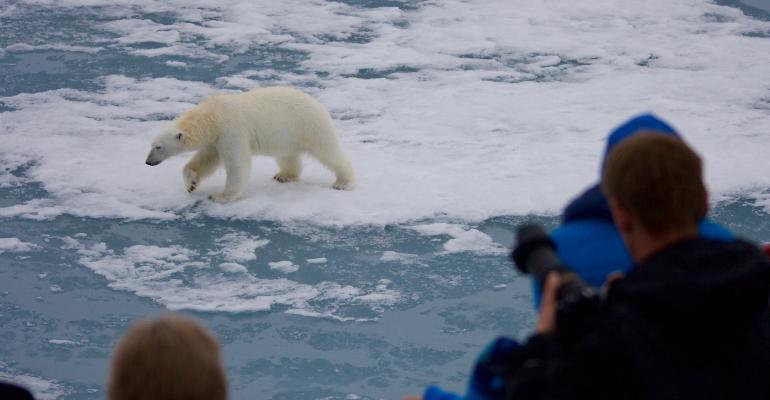The guidelines advise travelers how to act around animals like walrus, seals, reindeer, Arctic fox, birds, polar bears and cetaceans (whales and porpoises). It is mandatory for all AECO members to follow the guidelines.
'The Arctic is a captivating destination for animal-lovers and birders. AECO’s wildlife guidelines explain how to observe and photograph wildlife without disturbing it,' the association's executive director Frigg Jørgensen said.
The guidelines translate expert knowledge about animal behavior into practical know-how that can be used in the field. For example, if a person is walking along a beach and suddenly an Arctic tern attacks, what they do?
The guidelines explain the bird is probably trying to protect a nearby nest so the person should retreat, moving away in the direction he or she came from. If they hold up a hand or their hat, the bird will aim for that instead of the person's head.
The guidelines also contain information about animal behavior, recommended distances from different species, polar bear and walrus safety and how to position a ship or a group of tourists to avoid alarming the animals.
'The goal of expedition cruising is to bring passengers close to nature, and it is important that we are responsible visitors. Our members have decades of experience in Arctic cruise tourism, and spotting birds and animals is often the highlight of the voyage. These wildlife guidelines are a way of systematizing the best practices of our members when it comes to responsible and considerate wildlife observations,' Jørgensen said.
The guidelines were developed with the support of the Svalbard Environmental Protection Fund, and are available here.
Copyright © 2024. All rights reserved. Seatrade, a trading name of Informa Markets (UK) Limited. Add Seatrade Cruise News to your Google News feed.


